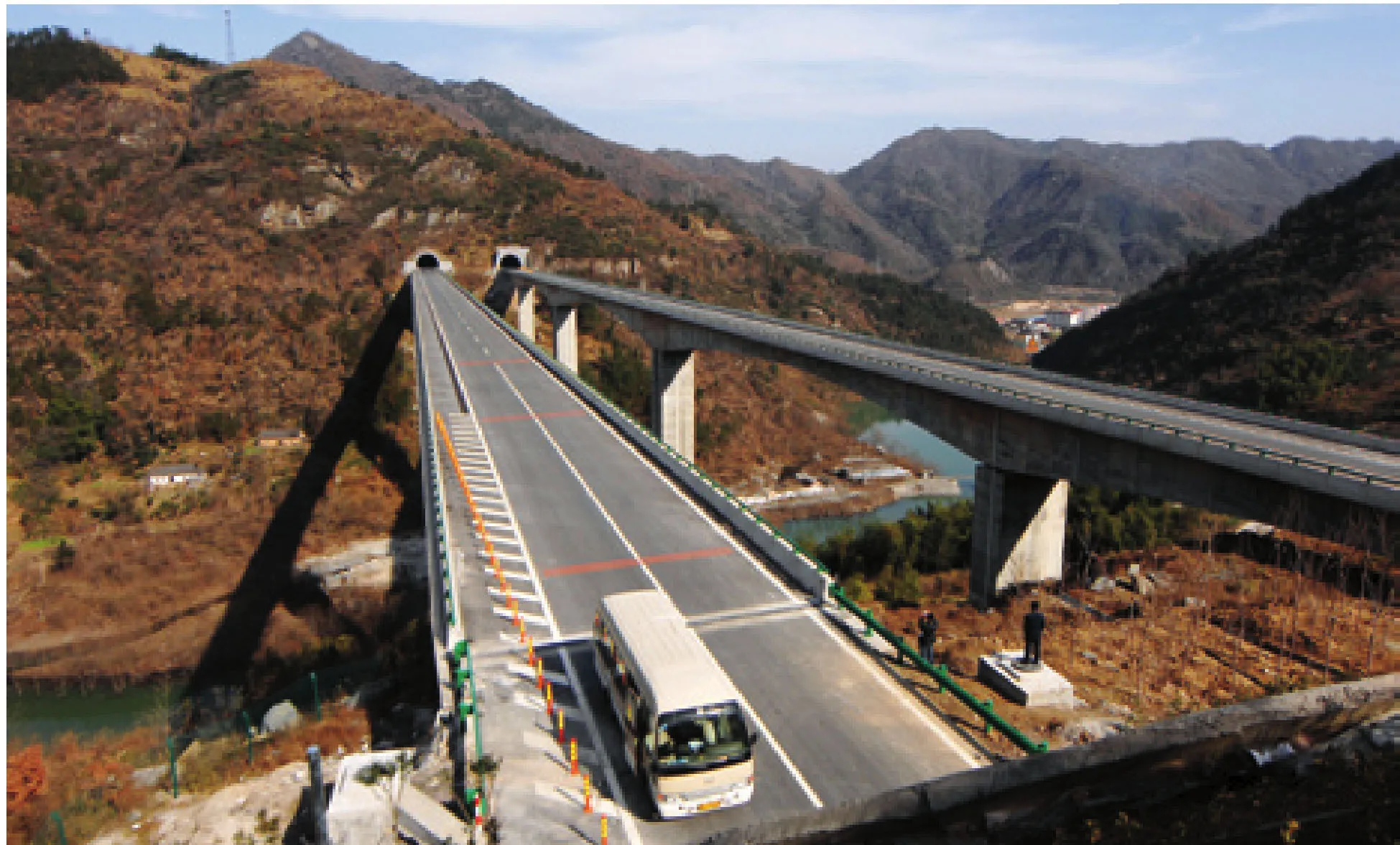Rejuvenating Old Revolutionary Bases
2012-10-14EnsuringareasthatsupportedtheRedArmyduringthewarshareinChinaprosperityByLanXinzhen
Ensuring areas that supported the Red Army during the war share in China’s prosperity By Lan Xinzhen
Rejuvenating Old Revolutionary Bases
Ensuring areas that supported the Red Army during the war share in China’s prosperity By Lan Xinzhen
In a bid to combat the Kuomintang regime and Japanese aggression, Mao Zedong and other leaders of the Chinese revolution set up many revolutionary base areas from 1927 to 1945.
During wartime, those areas provided labor, material and financial resources to the Communist Party of China (CPC) and the army under its leadership to help them persist in their struggle. However, since most of these revolutionary base areas are scattered among mountainous areas with inconvenient transportation, they have lagged behind in economic and social development over the past decades.
China is resolute to develop old revolutionary base areas in order to change their impoverished status and give them access to the fruits of China’s economic development. On March 2, the State Council gave the green light to the development plan of the Shaanxi-Gansu-Ningxia old revolutionary base area, which is jointly formulated by the National Development and Reform Commission (NDRC), China’s top economic planner, and the Development Research Center of the State Council. The plan is the first of its kind to accelerate the development of old revolutionary base areas.
The Shaanxi-Gansu-Ningxia old revolutionary base area embraces 17 cities and counties scattered in northwest Shaanxi and Gansu Provinces and the Ningxia Hui Autonomous Region, including Yan’an, the seat of the CPC headquarters in 1937-48, Qingyang and Wuzhong. Covering a total area of 192,000 square km, the area has more than 17 million people.
According to the plan, the Shaanxi-Gansu-Ningxia area will accomplish several goals by 2020, including the establishment of a modern energy industry system, a basic public service network that will reach the national average level and a well-off society. In the plan the Central Government also lists 22 favorable policies in five major categories, namely the fiscal and taxation system, finance, investment, land and resources, ecological environment and social support, to make sure those goals be smoothly accomplished.
There are over 10 large revolutionary base areas in China. Currently, plans for the central Soviet area (scattered in Jiangxi and Fujian provinces) and the Dabie Mountain old revolutionary base area (scattered in Anhui, Hubei and Henan provinces) are also being formulated.
Those areas have made a huge contribution to the founding of New China. Today, the Central Government has set the goal of improving the livelihood of the people there, said Li Yingming, Deputy Director of the Department of Western Region Development under the NDRC.
Ample natural resources
Old revolutionary base areas are blessed with abundant natural resources. For instance, the Shaanxi-Gansu-Ningxia area has rich mineral resources, such as coal, petroleum, natural gas, rock salt and limestone. The Xifeng Oilfield, the largest onshore oilfield in China, is located in the area. The area also has 194.9 billion tons of verified coal resources, one seventh of the total in China, and one third of the country’s total rare earth production capacities. The area also boasts ample new energy resources, such as wind and solar energy, offering a promising future for wind and solar power generation.
The city of Qingyang in Gansu Province is a key spot in the Shaanxi-Gansu-Ningxia area because that’s where the first Soviet regime in northwest China was established in 1934.
Qingyang has rich natural resources.“Although people’s livelihood has been greatly improved after years of development, we still have quite a long way to go compared with other regions. More effective policies should be adopted to facilitate its leaping development,” said Zhou Qiang, Mayor of Qingyang, at a press conference for the development plan of the Shaanxi-Gansu-Ningxia old revolutionary base area on March 18, 2012.

LEAD TO PROSPERITY: The new expressway in the Dabie Mountain old revolutionary base area, connecting it with the outside, has been put into use

Early in 2008, Qingyang was the first to call for a promotion plan for the Shaanxi-Gansu-Ningxia area and has received warm feedback from other cities and counties in the area.
According to Zhou, major difficulties that old revolutionary base areas face include poor infrastructure, fragile ecological environment, delayed development of natural resources, underdeveloped industrial structure and a low level of opening up.
Chen Zongxing, Vice Chairman of the Standing Committee of the Chinese Peasants and Workers Democratic Party, agrees with Zhou.
After years of study, Chen found that the main reason for the poverty in those old revolutionary base areas is their remote location and poor infrastructure.
“For instance, in Fujian Province, 1,000 villages of the old revolutionary base areas don’t have access to highways and over 1,200 villages don’t have safe drinking water,” said Chen.
The infrastructure conditions are so bad that it’s hard for those areas to attract investment. Worse still, they don’t have leading industries, said Chen.
To address this problem, the promotion plan has attached great importance to transportation construction in the Shaanxi-Gansu-Ningxia base area. By combining water resources usage, ecological construction and environmental protection, the plan lists key development points for the area from 2012 to 2020, involving over 120 key construction projects in 11 categories.
The promotion plan for the central Soviet area, which is now being formulated, takes mineral resources in the area, such as tungsten and rare earth, and special farm produce, such as oranges, as footholds for its future development.
The plan has a conspicuous purpose. The development of old revolutionary base areas used to be pushed forward by a fiscal transfer payment system. But this method can’t be sustainable. In the future, old revolutionary base areas should rely on their characteristic resources to realize sustainable development. Only in this way can they catch up with the pace of industrialization in China, said Zhou.
Addressing the problem
China has long been searching for ways to develop those areas.
During this year’s session of the Chinese People’s Political Consultative Conference (CPPCC), Zhang Hongwu, a CPPCC member and Director of the Yellow River Research Center at Tsinghua University, submitted a proposal on how to develop characteristic industries in old revolutionary base areas.
These areas have a late start and there are contradictions between economic development and ecological environment protection, said Zhang. “But they have their distinguished industries. How to put this advantage into best use is a realistic subject that needs urgent study.”
We should formulate strategic plans for developing distinctive industries in those areas. By fully utilizing local advantages, the government should support companies that can both offer job opportunities to rural surplus laborers and improve the ecological environment. The government should intensify support for anti-poverty campaigns and industrialization projects, said Zhang.
“What’s more, since old revolutionary base areas are mostly memorial sites for the Chinese revolutionary history, they can serve as patriotic education bases and team up in efforts to develop local tourism,” said Zhang.
In the eyes of Chen, the most urgent task is to make a thorough investigation on old revolutionary base areas nationwide and then make a national and systematic plan for propelling their development.
“For people living in extremely severe environments in those areas, the government should improve their living conditions by relocation. At the same time, relics of the Chinese revolution should be restored and properly protected,” said Chen.
